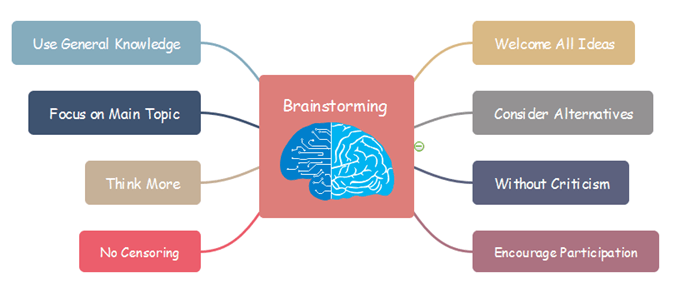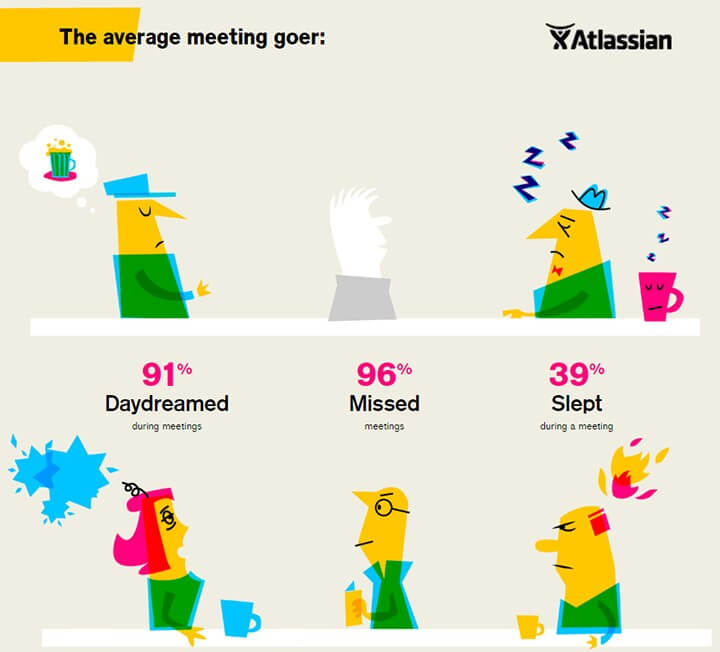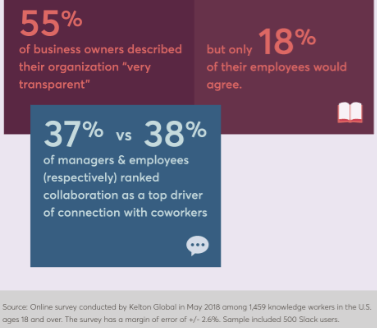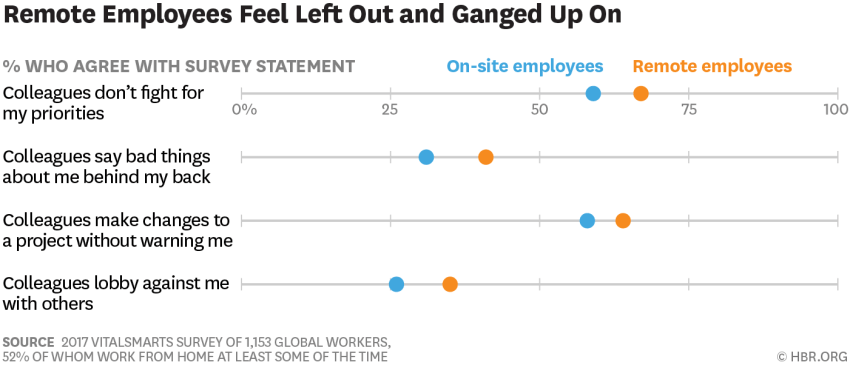Rigid managers. Traditional collaboration tools. Excessive meetings... These are all major culprits of remote employees' disengagement and lack of motivation.
In this modern digital age, there are many obstacles to efficiently managing remote staff. Especially because managers assume that remote workers' expectations are the same as in-office employees. But there’s a big difference between these two types of workers: ones suffer from isolation, and others don’t!
Okay, now that we know what doesn’t work with remote employees, can we define what does?
The key to how to keep remote employees engaged is building a successful online community that will keep your workforce highly engaged. Here’s how!
Remote Employees Want to Attend Only Important Meetings
Have you ever sat through a too-long and pointless meeting that was a complete waste of time? That’s how the majority of remote workers feel when they have to attend a number of boring meetings.
According to a study by Steven Rogelberg of the University of North Carolina, 71% of senior managers said that meetings are unproductive and inefficient. If you want to build a successful online community, you need to figure out which meetings are productive for your employees, and which aren’t.

How can you engage employees to participate more in meetings without them dozing off?
- Use onboarding meetings to do help new employees understand your organizational structure and their role in it.
- Use brainstorming meetings to encourage innovation, creativity, and awesome ideas.
- Hold kickoff meetings to improve employee satisfaction, productivity, save time, and deliver results faster.
- Hold budget meetings to let the team know how much money is going to be spent on which project.
Onboarding meetings
It can be very confusing for an employee not to have a basic understanding of how things work when they start a new job. Especially when they’re working remote. This is why onboarding meetings are essential.
When you have a good onboarding meeting, your new employees can see you are on top of your game. The meeting will make them feel heard and valued, which will lead to their retainment. The first impression counts!
What’s more, onboarding meetings can secure that everyone in the company has the same key information to reach their full potential. The new employees will feel a high level of support and engagement from their co-workers and management. The end result? Positive attitudes towards the company and business outcomes.
Onboarding meetings can help new employees understand your company culture, meet their coworkers, and get an understanding of their role at the company. A well-informed employee has a lot more potential and creativity than the one who skipped the onboarding meeting.
Brainstorming meetings
What are businesses without great ideas? That’s when brainstorming comes in handy. It can encourage innovation, creativity, and awesome ideas.
It’s like that movie Saw, but less traumatic. You have a number of people in a “room” together, sharing ideas, and getting creative. They are free to leave once they’ve come up with something clever.
Take Google for example. To make brainstorming meetings super productive and fun, Google Ventures design team has adopted a cool method. It’s called “note-and-vote”. Everyone on the team gets paper, a pen, and five minutes to write down as many ideas as they can.
Then, everyone goes around and shares their top ideas. In the next five minutes, each member individually picks out a favorite idea and writes their vote down. The votes are then revealed and noted. One person, called the “decider”, makes the final call on which idea to go with.
Jake Knapp, who’s on the Google Ventures team, says that this method is an opportunity for everyone on the team to get creative and to be heard. A ton of ideas are created and in most cases, quantity leads to quality.
I think she thinks, they think …. And all of a sudden you have a super innovative idea for your next project! Never underestimate the power of brainstorming ideas and your employees’ super brains.

Kickoff meetings
How will your employees know what projects are next on the to-do list? How will they complete them successfully? By holding awesome kickoff meetings!
These meetings are an opportunity to tell the employees what are the short-term and long-term goals of the project, their part in it, and any significant due dates.
Team members become aware of the:
- project objectives
- deliverables
- challenges
- methodologies
- procedures
- plans
- working environment
By holding productive kickoff meetings, you can set the tone for the rest of the project. These meetings will ensure that all team members are on the same page and have a common understanding of the project objectives. What’s more, they’ll learn how to work with each other and deliver greater results.
Feedback meetings
Feedback meetings are a great way of getting together and discussing what went well with the project, and what didn't. No project ever goes perfectly so it’s important to hold a feedback meeting after your kickoff meeting.
These meetings are also a great way for your employees to learn and grow professionally. One study even showed that 65% of employees would like more feedback than they currently get. Roughly 27% of them said that the feedback they receive helps them work better.
Adeva’s managers and employees were asked to give their feedback on feedback meetings. They said that feedback meetings lead to:
- Stronger relationships between managers and team members.
- Improved productivity.
- Team loyalty.
- High-performing employees.
- Meaningful and personable communication.
- A straightforward communication that drives exceptional results.

Budget meetings
Money makes the business go round, so budget meetings are essential. In order to avoid tension and miscommunication, it’s important that everyone on the team knows how much money is going to be spent, what is the money being spent on, and what kind of return is expected on the investment.
The most notable benefits of budget meetings include:
- Planning for the future.
- Having everyone on the same financial page.
- Minimizing conflict in the future.
- Keeping surprises to a minimum.

Remote Teams Thrive Off Of Modern Communication Tools
Working together can be hard work, especially when you have team members who work in different locations. Lack of good team collaboration tools can lead to unclear objectives, lack of visibility, and poor planning.
Throughout the years, remote collaboration has been continuously evolving. New developments in technology today encourage the innovation of advanced online community tools that significantly improve the communication between team members. However, with more players entering daily, the collaboration market can become saturated. This can be challenging for organizations to choose the right tools for their teams.
Luckily, there are online community building tools that are well-liked by many teams, including:
- Asana: a great tool for organizing and planning workflows, projects, and more.
- Slack: an awesome collaboration tool that connects all the pieces of your organization into one place.
- Dropbox: a tool that brings your files together, in one central place.
- Zoom: a reliable platform for video conferencing, chat, and webinars.
- GitHub: a useful platform where users can collaborate on open source code projects, share ideas and so much more.
- HelloSign: a tool that lets you sign documents online that is a must for remote businesses.
- Google Drive: a safe place for storage and collaboration of your documents and files.
These tools give remote teams the functionality they want, without unnecessary complexity and rigidity. They are awesome online community tools that meet the requirements of IT decision-makers and ensure them they’re choosing a secure tool they can always rely on. What’s more, they also integrate with each other to offer a seamless collaboration experience.
Remote Workers Seek Trust and Transparency
What is a romantic relationship or a friendship without trust? Without it, all types of "ships" fall apart. The same applies to remote teams. You can’t expect great results and a smooth collaboration without trust and transparency. Just like flour creates the structural network of a good cake, trust is the core concept of building online communities.
How do you build trust? Is there a manual you can use? In short, what employees want to know is the following:
- Data about their company: details about the business strategy, what and how decisions are made, financial stability.
- Details about the competition: who are the industry leaders, what are the industry trends, external events, and overall competitive awareness.
- Info about their colleagues: internal information, promotions.
By giving your employees the trust and transparency they need, you’ll get to enjoy all the benefits of a distributed workforce.

Remote Employees Want to Feel Included
The days when teams worked side by side, lived in the same cities, and went to the same bars are gone. Today, teams are dispersed across different countries and continents. Plenty of people collaborate with colleagues they have never met face-to-face. For this reason, it can be quite challenging to build trust and feel included.
Harvard Business Review (HBR) surveyed 1,153 employees, out of whom 52% reported working from home, at least some of the time. They said that when they do work from home, they feel that their colleagues mistreat them and leave them out. They constantly worry that their coworkers make changes in projects without telling them, lobby against them, and say bad things behind their backs.
What should managers do? Should they encourage in-office working? Not exactly. They should encourage routines that lead to feelings of trust, connection, inclusiveness, and common purpose.
When HBR asked the respondents to identify the skills they’re looking for in a manager, they gave the following seven best practices:
- Check-in frequently and consistently.
- Use face-to-face or voice-to-voice contact.
- Demonstrate exemplary communication skills.
- Make expectations explicit.
- Be available.
- Demonstrate familiarity and comfort with technology.
- Prioritize relationships.

Remote Workers Crave Team Relationships and Connection
Employee recognition is limited in most organizations. Don’t be most organizations! Stand out from the crowd, like a red balloon in a pool of yellow ones. Say a simple “great job”, or “what you did was exceptional” to your employees. Their motivation levels will sky-rocket!
Use tech tools to create dedicated spaces for celebrating special days like birthdays, company milestones, as well as community recognition.
Engage your remote employees on a daily or weekly basis through a chosen channel of communication. Plan regular face-to-face meetings as they can bring the whole team closer and stronger. At the start of each meeting, give them five minutes of chit-chatting and casual talk. This can help them get to know each other better.
This constant interaction will help remote employees feel included, which is an important aspect of building online communities.
The Birth of the Modern Manager
When people were asked to describe a manager who is really good at managing remote teams, they said that never heard of, or seen one. Can you be among the first ones of this kind?
To become an efficient manager of remote employees, all you’ll need to do is:
- Build trust.
- Create connections.
- Encourage collaboration.
- Support inclusiveness.
Managers who practice these strategies can prove that “out of sight” doesn’t mean “being left out”. Give it a try, and prepare to be amazed by your employees’ creative work and innovation!
Conclusion
- The key to bringing life to your remote team is building online communities which will keep your workforce fully engaged at work.
- If you want to build successful online communities, you need to figure out which meetings are productive for your employees, and which aren’t.
- Remote workers demand modern team collaboration tools in order to be more productive and engaged.
- Without trust and transparency, the remote team will most likely fail.
- Remote employees want deep bonds with their co-workers and managers.
- Managers should encourage routines that lead to feelings of trust, connection, and common purpose.


